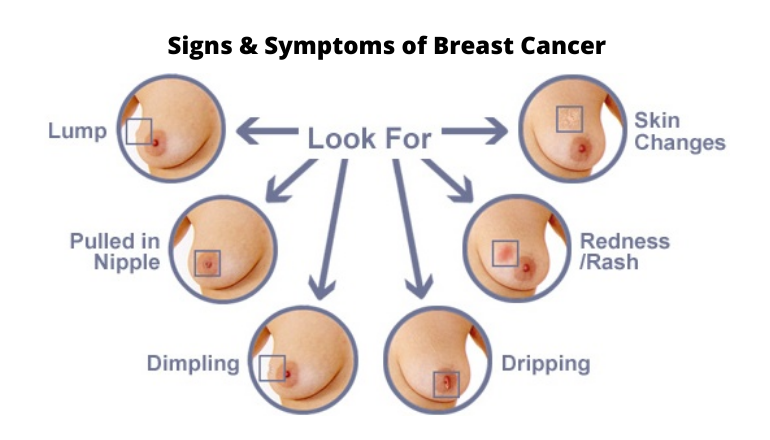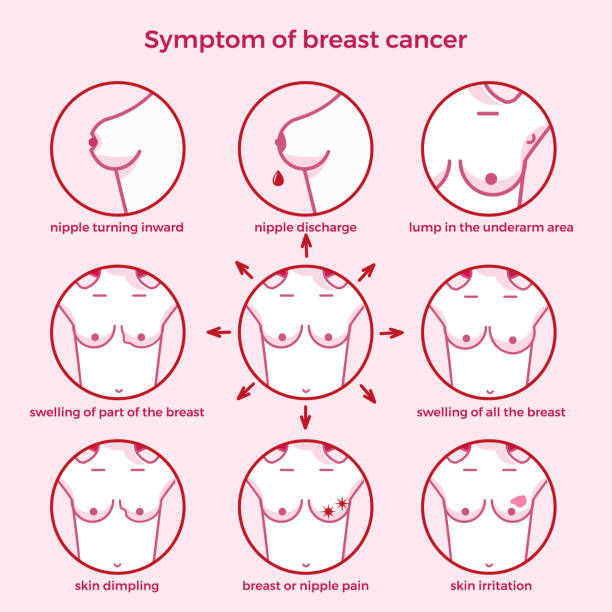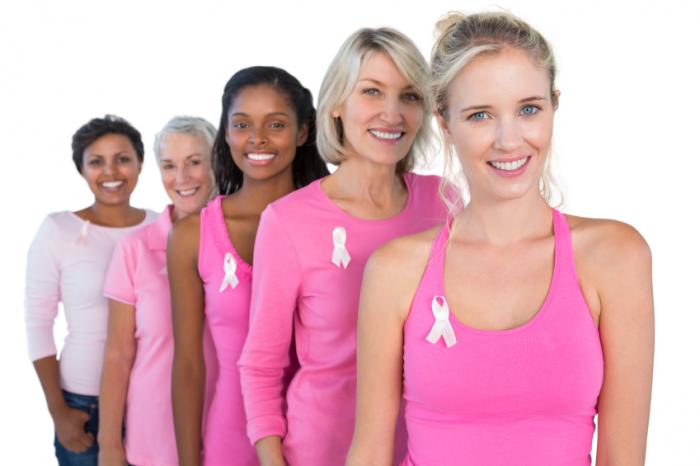Breast cancer symptoms
What is breast cancer ?
Breast cancer is a type of cancer that disrupts the function of cell division in breast cells. Breast cancer cells multiply in an infected person, out of control and too much. There are different types of breast cancer. The type depends on which type of breast cell is affected. This cancer can start in different places in the breast.
The breast has three general parts:
Lobules: Tubers in which milk is made.
Ducts: The tubes that carry milk from the lobule to the nipple.
Connective tissue: The fibrous tissue and adipose tissue that surrounds and holds together other parts of the breast.
Most breast cancers start in the ducts or lobules. Cancer cells can travel out of the breast through blood vessels and lymphatics and spread to the rest of the body. In this case, we say that metastatic cancer has occurred.

What are the different types of breast cancer?
The two most common types of breast cancer are:
Invasive breast duct cancer: In this type of breast cancer, cancer cells form in the duct. After advancing slowly, they move outwards and into other parts of the breast. These cells may even come out of the breast and affect other areas of the body.
Invasive lobular breast cancer: In this type of cancer, cancer cells first form in the lobule and then move to the rest of the breast and beyond.
There are other types of breast cancer that are not uncommon, such as Paget’s disease, medullary cancer, mucosal cancer, and inflammatory breast cancer.
What are the symptoms of breast cancer and how do we diagnose them?
The disease appears asymptomatic in some people and sometimes has different symptoms that are different in different people. Having the following symptoms does not necessarily mean that you have the disease, but seeing these general symptoms, you can suspect the disease and see a doctor:
The formation of bumps or mass-like components in the breast or axilla
Swelling of part of the breast or thickening of the skin
Orange peeling of the breast
Nipple pain or nipple pulling inward
Redness or peeling of the nipple
Discharge of any substance other than milk from the nipple (such as blood)
Any change in breast shape or pain

What should a normal breast look like?
The shape of the breast varies from person to person and there is no such thing as a normal breast. The appearance of the breast is affected by various environmental factors. For example, the onset of menstrual bleeding, obesity or weight loss, childbearing, aging, and certain medications can change the shape of the breasts.
Is a breast lump necessarily dangerous and bad?
Tumors that form in the breast are not necessarily cancerous. Sometimes these lumps are small, fluid-filled cysts, and in most cases they develop for reasons other than cancer. For example, cysts and fibrocystic conditions of the breast are two very common factors. The fibrocystic condition causes changes in the breast that may be accompanied by pain, burning, and the formation of a breast mass.
Immutable risk factors that affect breast cancer.
Being a woman and growing old are two very important factors.
Events such as genetic mutations throughout life
The start date (first) and the end (menopause) affect the incidence of breast cancer. The lower the age of onset and the older the age, the greater the risk of cancer.
A history of breast cancer in the family or the individual (formerly) increases the risk of developing it.
There are other non-cancerous diseases of the breast, which increase the risk of infection.
Radiation therapy and the use of diethylstilbestrol by a person (by his mother during pregnancy) are also two factors.
Mutable risk factors that affect breast cancer.
Overweight and obesity (especially after menopause)
Inactivity and not exercising
Consumption of female hormones (for contraception and alternative treatment after menopause)
History of pregnancy without delivery
Delivery after the age of 30 and not breastfeeding the baby before that
Consumption of alcoholic beverages and tobacco
Given that the above category of risk factors is somewhat under our control, we can avoid the risk by avoiding them.


I’m always inspired by your words. illplaywithyou
You could certainly see your skills within the paintings you write. The world hopes for even more passionate writers like you who are not afraid to say how they believe. At all times follow your heart.
Thanks for the unique tips contributed on this weblog. I have realized that many insurance companies offer consumers generous reductions if they choose to insure several cars with them. A significant volume of households have got several vehicles these days, particularly people with more mature teenage children still living at home, and the savings on policies could soon increase. So it will pay to look for a bargain.
A combination of cutting-edge techniques and strategic insights that propel your website to the forefront of search engine results. From on-page optimization to off-page tactics, every aspect of our formula is designed to maximize your website’s visibility and drive targeted traffic. https://bit.ly/3JKYpu5
Good write..